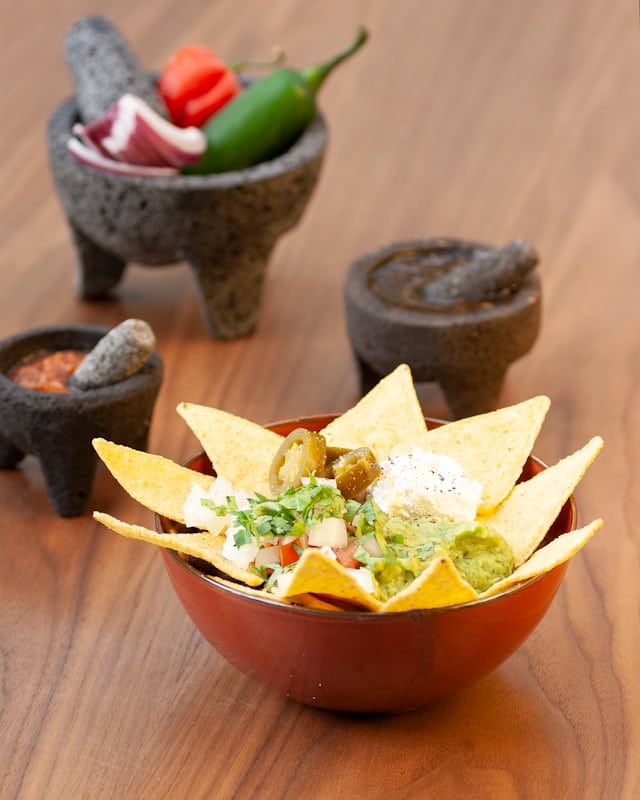As the warm season approaches, the desire for a refreshing and tasty dish leads many to turn to gazpacho. Gazpacho, a classic Spanish soup, boasts a gorgeous blend of fresh vegetables, the ripest of tomatoes, a hint of olive oil and vinegar, and an assortment of other wholesome ingredients.
This chilled soup, served straight from the fridge, offers a refreshing burst of clean, crisp flavors that make it the perfect dish to combat the summer heat. But, the very heart of a good gazpacho lies in the balance of its acidity. How can we reach this perfect equilibrium? What are the secrets behind achieving a gazpacho with a harmoniously bright and tangy taste?
Sujet a lire : What’s the Secret to the Ultimate Vegan Chocolate and Avocado Mousse?
The Foundation of Gazpacho: Fresh and Quality Ingredients
The first step in crafting a delightful gazpacho is the careful selection of fresh and quality ingredients. A typical Spanish gazpacho recipe consists of ripe tomatoes, cucumber, bell pepper, onion, and garlic. These vegetables, coupled with a good extra virgin olive oil, vinegar, and stale bread to add body to the soup, are the basis of an authentic gazpacho.
Tomatoes
The star of the show in a gazpacho soup is the tomatoes. Their freshness and quality will directly affect the taste and the acidity of the soup. Choose ripe, juicy, and flavorful tomatoes, as they are the base of your gazpacho.
Dans le meme genre : What Techniques Can You Use to Make the Perfect French Macaron?
Cucumber and Bell Pepper
The cucumber and the bell pepper add freshness and a crunchy texture to the gazpacho. When selecting these ingredients, make sure they are firm and vibrant, without signs of wilting.
Onion and Garlic
Onion and garlic, although used sparingly, impart a distinct bite and pungency to the gazpacho. Pick fresh onions and garlic that are free from any green sprouts, as these can make your gazpacho taste bitter.
Olive Oil and Vinegar
The olive oil and vinegar play a crucial role in balancing the acidity of the gazpacho. A good quality extra virgin olive oil adds a silky richness to the soup. On the other hand, vinegar provides a zesty tang that enhances the flavors of the vegetables.
Bread
Believe it or not, stale bread is a key ingredient in traditional gazpacho. It acts as a thickener, giving the soup a more substantial texture. Just make sure to use a bread made from wheat flour, as it absorbs the flavors better.
The Art of Balancing the Acidity in Gazpacho
A key element in creating a delicious gazpacho is striking the right balance of acidity. This mostly comes from the tomatoes and the vinegar, but can also be adjusted with a few simple tricks.
Understanding the Acidity of Tomatoes
Different types of tomatoes have varying acidity levels. Generally, the more ripe and sweet the tomato, the lower its acidity. Conversely, unripe or “green” tomatoes tend to be more acidic. Knowing this, you can adjust the amount and type of tomatoes you use depending on their acidity.
Vinegar to Taste
The vinegar is another ingredient that influences the acidity of your gazpacho. Adding too much can make your soup overly tangy. It’s recommended to add vinegar gradually, tasting the soup as you go, until you reach your desired acidity level.
Balancing With Additional Ingredients
If you find your soup is too acidic after adding the tomatoes and vinegar, you can balance it with additional ingredients. Adding more bell pepper can mellow out the acidity, as can adding a bit of sugar. Don’t overdo it though, you still want your gazpacho to have a refreshing tang.
Perfecting the Gazpacho Texture
After we’ve tuned the acidity, we turn our focus to the texture. A gazpacho should be thick and hearty, but not overly chunky or watery. Here, the stale bread and olive oil play their roles.
Bread’s Role
Bread contributes to giving gazpacho its unique texture. Soaked in a bit of water and then blended with the other ingredients, it creates a thicker, creamier soup. While some prefer a smoother gazpacho, others like it a bit chunkier. Adjust the amount of bread and the blending time to suit your own taste.
Olive Oil’s Contribution
Olive oil is another factor in achieving the perfect gazpacho texture. When emulsified with the other ingredients during blending, it gives the soup a smooth and velvety texture.
Serving and Storing Gazpacho
The best way to enjoy gazpacho is to serve it well-chilled. This enhances the freshness of the ingredients and makes it an ideal dish for hot summer days. If you have time, refrigerate your gazpacho for a couple of hours before serving.
When it comes to storing, gazpacho keeps well in the fridge for about 2-3 days. The flavors even improve after a day, as the ingredients have time to meld together.
Garnishing for Extra Freshness
To add an extra layer of texture and freshness to your gazpacho, consider garnishing it with some finely chopped vegetables. A mixture of cucumber, bell pepper, onion, and tomato can provide a delightful crunch that will contrast beautifully with the smooth soup. A drizzle of olive oil and a sprinkle of fresh herbs can also add a touch of elegance and taste.
Creating a flawless gazpacho is all about balance – between the freshness of the vegetables, the acidity of the tomatoes and vinegar, and the richness of olive oil. With the right selection and proportion of ingredients, you can make a bowl of gazpacho that offers a refreshing, tangy, and satisfying taste, perfect for cooling off in the heat of summer.
A Step-by-Step Guide to Creating the Perfect Gazpacho
Now that we know the key elements of a successful gazpacho recipe, let’s dive into the cooking process.
Before you commence, ensure you have all the necessary ingredients close at hand. This includes fresh tomatoes, cucumber, bell pepper, onion, garlic, quality extra virgin olive oil, vinegar (preferably sherry vinegar), and stale bread.
Firstly, wash your vegetables thoroughly. Then, roughly chop the tomatoes, cucumber, bell pepper, and onion. Dice the garlic as finely as possible. Don’t fret over the size or uniformity of your pieces, as everything will be blended together.
For the bread, tradition calls for stale wheat bread. Soak a slice in some water to soften it. This will aid in its integration into the soup, providing a more consistent texture.
Next, combine your vegetables, soaked bread, a generous pour of olive oil, and a good splash of vinegar in a blender or food processor. Blend until smooth, remembering to adjust the vinegar and olive oil to attain the perfect balance of acidity. If the gazpacho is too acidic, add some extra bell pepper or a pinch of sugar to mellow it out.
Once you’re satisfied with the taste and acidity, focus on getting the texture right. If you prefer a chunkier gazpacho, blend for a shorter period. For a smoother consistency, blend for longer.
Remember, your gazpacho soup should taste fresh, tangy, and have a subtle richness from the olive oil. The texture should be thick and velvety, thanks to the stale bread and the emulsifying effect of the olive oil.
Wrapping it Up: The Beauty of Gazpacho
In conclusion, creating a balanced, flavorful gazpacho is no simple task — it requires a keen understanding of each ingredient’s role and a keen sense of taste. From the ripe tomatoes which form the gazpacho’s base, to the subtly pungent garlic and onion notes, every element counts.
When it comes to balancing acidity, always remember that ripe, sweet tomatoes are less acidic, while unripe or green ones have high acidity. The sherry vinegar adds a pleasant tang but needs to be used sparingly and adjusted to taste.
The red onion, bell pepper, and cucumber add a refreshing, palate-cleansing counterpoint to the robust tomato and olive oil flavors. And let’s not forget the humble stale bread, which gives the gazpacho soup its characteristic thickness.
Lastly, serving and storing your gazpacho right is crucial. Always serve it well-chilled to enhance its refreshing quality. If stored correctly in the fridge, a gazpacho can keep its flavors vibrant and fresh for 2-3 days. In fact, it often tastes even better a day after it’s made, as the ingredients have more time to meld together.
Creating a perfect gazpacho is an art that takes practice to master, but it’s worth every spoonful. Whether you serve it in the heat of July or June, or during the cooler months of November or October, this timeless dish will always be a delight to the palate. So grab your food processor, gather your ingredients, and start crafting your version of the perfect gazpacho.
















